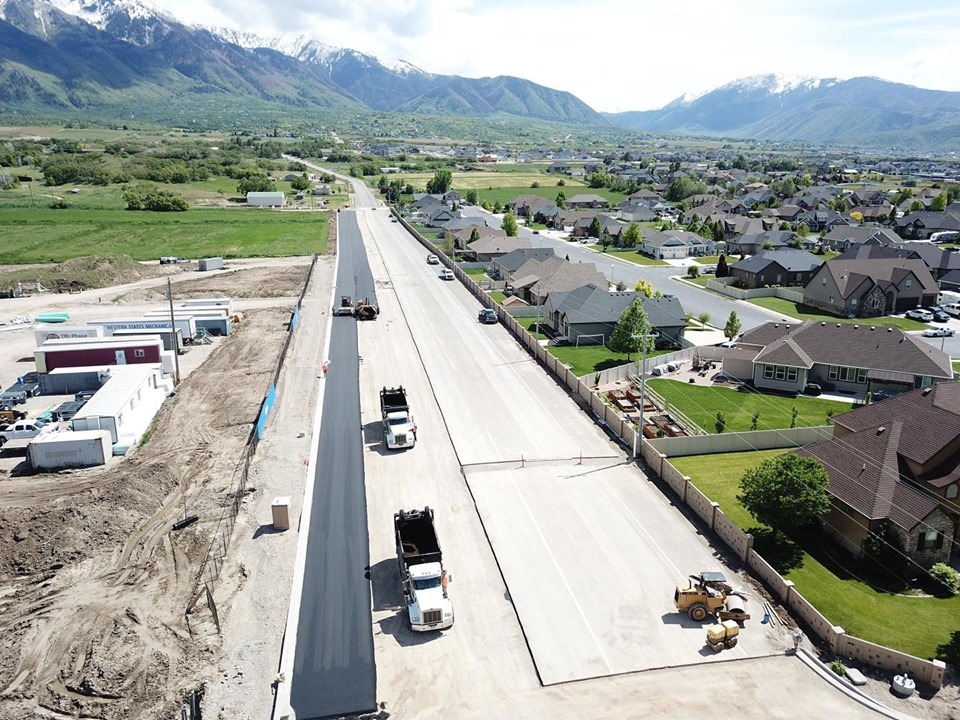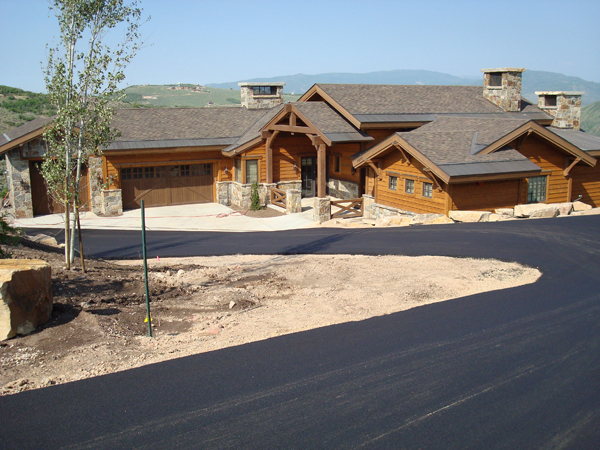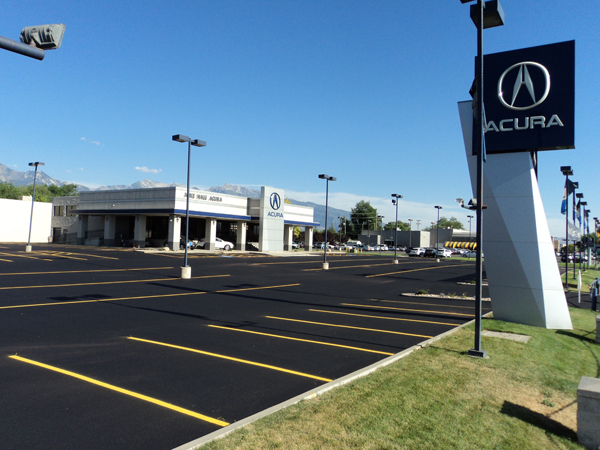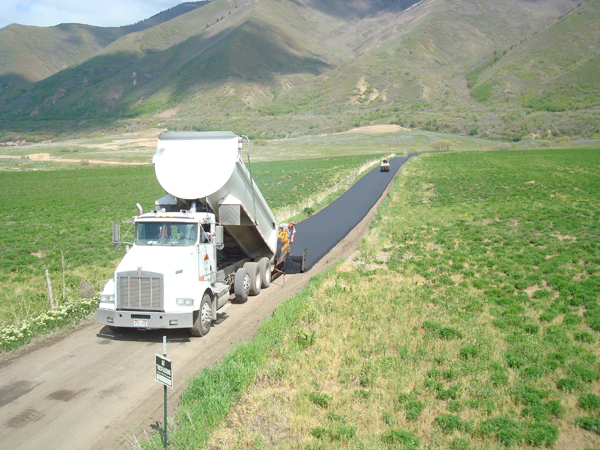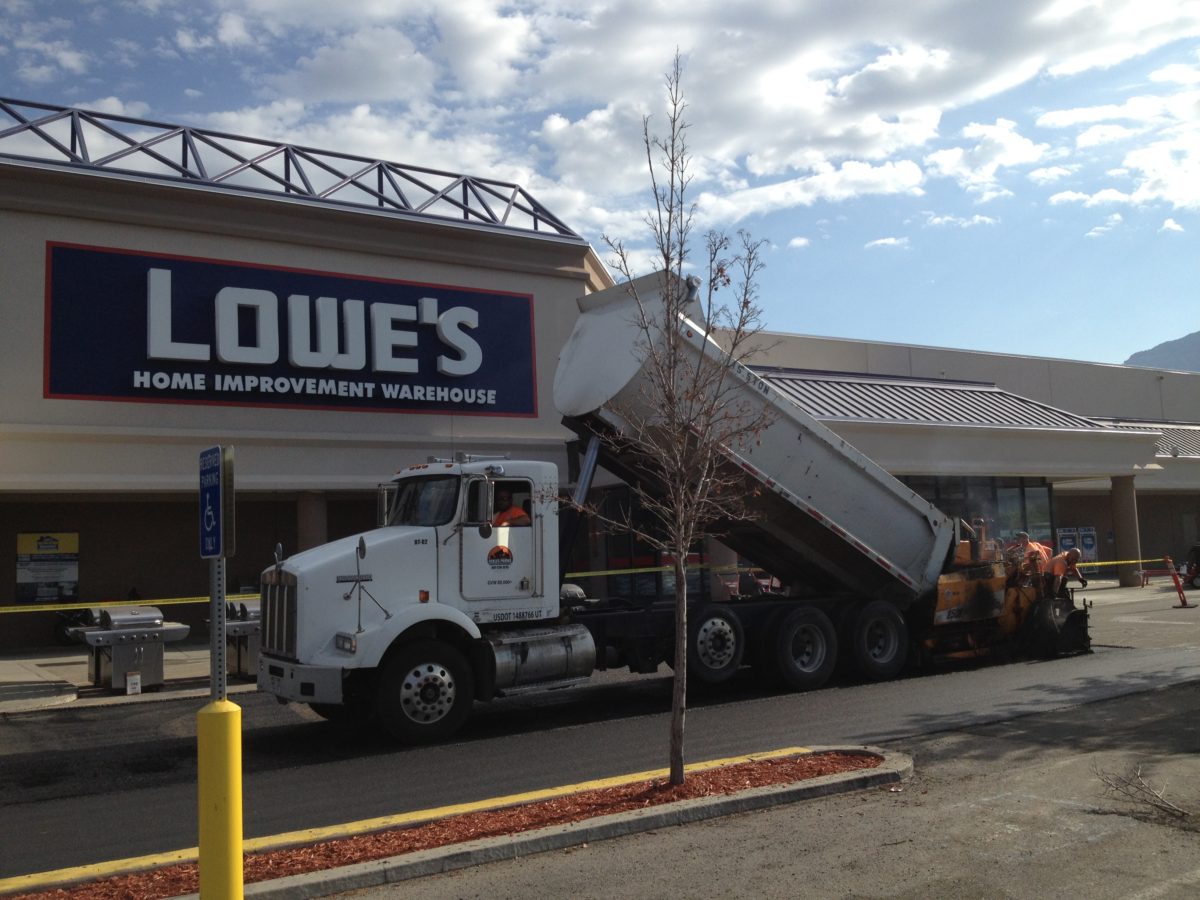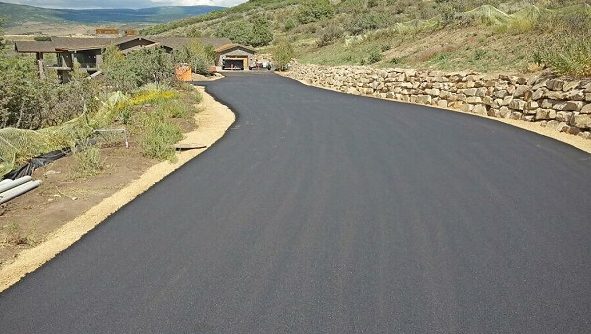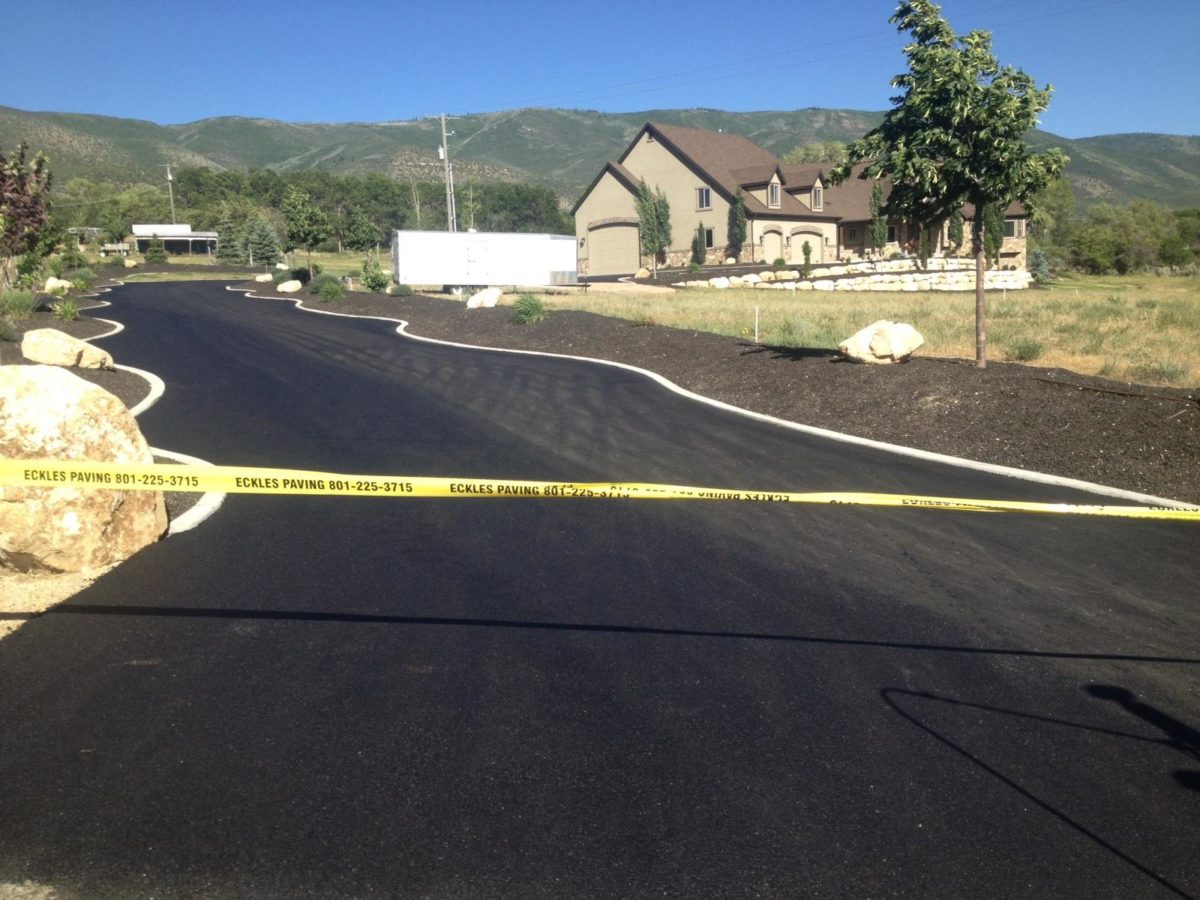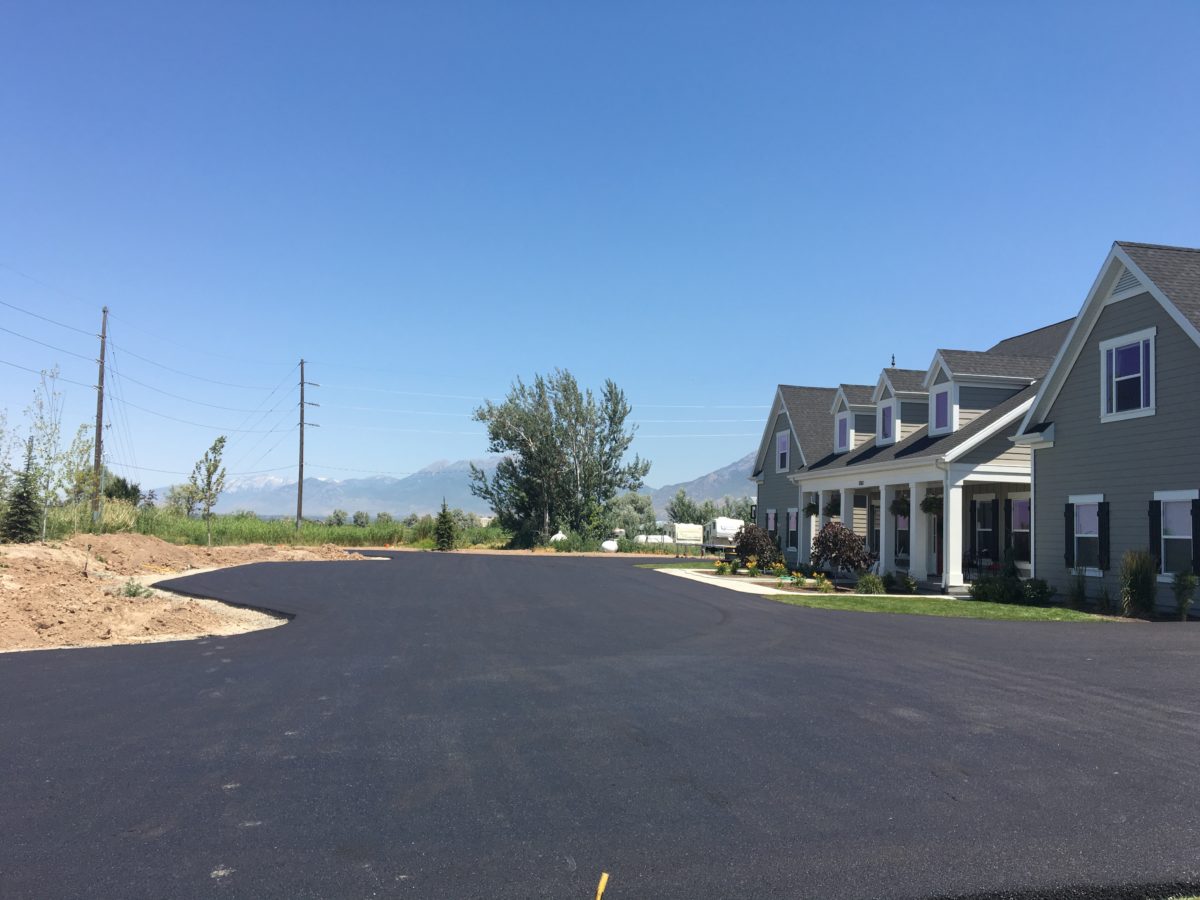What is Asphalt?
Asphalt is a combination of approximately 95% stone, sand, or gravel (aggregate) bound together by liquid asphalt, a product of crude oil. The aggregate serves as the wear course and the liquid asphalt is the “glue” that holds it all together. Liquid asphalt is a solid at ambient temperature. When heated to roughly 300 degrees, the liquid asphalt becomes liquid which allows for the aggregate and the liquid asphalt to be combined and mixed. This process is performed at an asphalt plant or “hot plant”. The resulting asphalt is loaded into trucks for transport to the paving site. The trucks dump the asphalt into the hopper located on the front of the paving machine. The asphalt is placed by the paving machine, and then compacted using a heavy roller, which is driven over the asphalt. Paving and compaction must be performed while the asphalt is sufficiently hot. Traffic is generally permitted on the asphalt as soon as the asphalt has cooled. In Utah, paving is restricted to the summer months because in winter the compacted base will cool the asphalt too much before it is packed to the optimal air content.
Asphalt Overlay
As your asphalt moves through its effective lifecycle, you will start to notice increased areas of deformation such as settling and uneven surface, excessive cracking and/or reoccurring need for patching in an isolated area. These are all signs that your driveway or parking lot is ready for an asphalt overlay.
An asphalt overlay is the application of a new layer of asphalt to an existing layer of asphalt. An overlay adds the structural capacity lacking by the existing surface. It also adds to the smoothness of ride, makes your driveway or parking lot “look new” again without the expense of removing and replacing your asphalt and can help uneven asphalt surfaces drain better in certain conditions. (NOTE: ASPHALT OVERLAY WILL NOT FIX ALL DRAINAGE PROBLEMS.) Asphalt overlays are typically 1.5 or 2 inches. Traffic volume, existing pavement condition, as well as an individual customer’s needs are considered in determining asphalt thickness.
